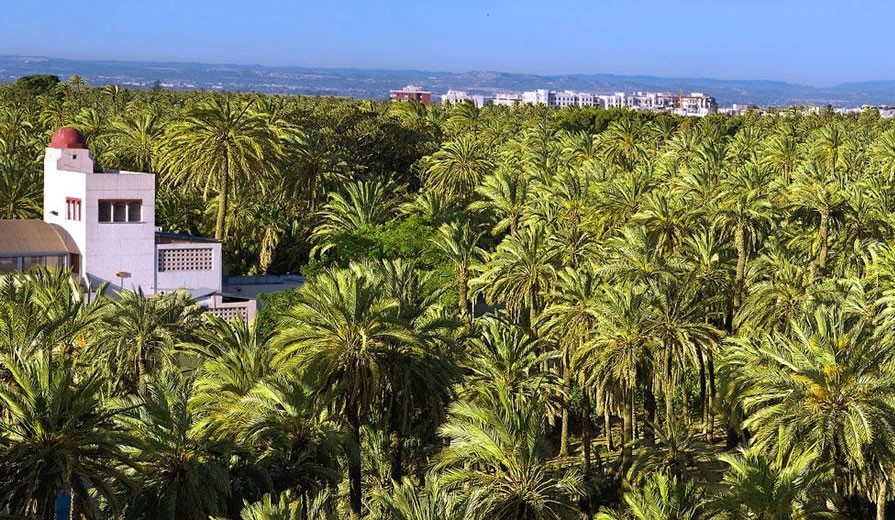How beautiful it is to drive along the Costa Blanca of Alicante and see the historic “Palmeral” Palm Grove of Elche, a unique landscape that transports you to the Islamic era where intensive cultivation began a millennium ago.
Declared a World Heritage Site in 2000 and together with the sacred drama of El Misteri d'Elx and the Puçol School Museum, it shows that Elche has enough history to deserve special protection and recognition.
How was El Palmeral of Elche born?
The expansion of the palm grove was born from the new city that the Arabs built from the 8th century, they developed the system of an extensive irrigation network, very impressive for the time and that is mostly still used today. And thanks to the survival through the centuries of this system of agriculture, the oasis was one of the aspects that valued the UNESCO declaration.
That with the arrival of Muslims from Egypt, experts in agriculture, the palm grove began to grow and It must have reached dimensions even larger than those designed and built by the hand of the Umayyad prince Abderramán I.
That is why we have to thank the founders of the Islamic city of Elche, who left us as an inheritance an irrigation system of Andalusian origin for the orchards and palm trees and thanks to this it has been possible to cultivate traditional species and new ones too.
How many palm trees does the Palm Grove of Elche have?
The largest palm grove in Europe: the Palmeral de Elche, has more than 200,000 palm trees.
Palm trees have always conquered all of southern Europe, they arrived before us humans, but when temperatures began to drop, most palm trees became extinct, except for the warmest areas protected from cold currents, such as Elche.
Currently, the palm grove has more value and recognition for its landscape and cultural characteristics than agriculture and you can take guided tours through the beautiful and unique orchards of the Palmeral de Elche such as the outstanding Huerto del Cura, of great beauty, the Municipal Park, the Huerto de Below and the Huerto del Chocolatero.
Also interesting are the new agricultural alternatives that have been established, such as the production of white palm for Palm Sunday, which supplies the whole of Spain and even abroad, and reduced date harvests for the local market, thanks to the fact that commercial quality varieties of palm trees reproduced in the laboratory have begun to be obtained very successfully.
Do you want to discover more treasures and archaeological heritage such as that of Guardamar del Segura and other landscape jewels such as the Sierra del Maigmó? Take a look at our Costa Blanca Tourism news section.






 API: 764
API: 764
